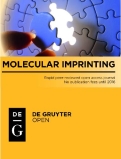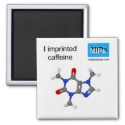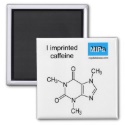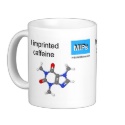|
|
Reference type: Journal
Authors: Odabasi M, Say R, Denizli A
Article Title: Molecular imprinted particles for lysozyme purification.
Publication date: 2007
Journal: Materials Science and Engineering: C
Volume: 27
Issue: (1)
Page numbers: 90-99.
DOI: 10.1016/j.msec.2006.03.002
Alternative URL: http://www.sciencedirect.com/science/article/B6TXG-4JTR90N-1/2/6bf64a8828d237ef19f07f3b8ef1c9e4
Abstract: Molecular recognition-based separation techniques have received much attention in chemistry and biology because of their high selectivity for target molecules. The aim of this study is to prepare lysozyme-imprinted polymers which can be used for the purification of lysozyme from aqueous solutions and egg white. N-methacryloyl-(l)-histidinemethylester (MAH) was chosen as the metal-complexing monomer. In the first step, Cu2+ was complexed with MAH and the lysozyme-imprinted poly(HEMA-MAH) [Lys-MIP] particles were synthesized by UV-initiated bulk polymerization. After that, the template (i.e., lysozyme) were removed using 0.1 M NaCl solution. The specific surface area of the Lys-MIP particles was found to be 22.9 m2/g with a size range of 20-63 μm in diameter and the swelling ratio was 57%. According to the elemental analysis results, the particles contained 421 μmol MAH/g polymer. The maximum lysozyme adsorption capacity was 12.1 mg/g polymer. The relative selectivity coefficients of imprinted particles for lysozyme/human serum albumin and lysozyme/cytochrome c were 3.6 and 4.1 times greater than NIP particles, respectively. Purification of lysozyme from egg-white was also monitored by determining the lysozyme activity using Micrococcus lysodeikticus as substrate. The purity of the desorbed lysozyme was about 89% with recovery about 84%. The Lys-MIP particles could be used many times without decreasing their adsorption capacities significantly
Template and target information: protein, lysozyme
Author keywords: molecular imprinting, molecular recognition, Lysozyme purification, protein adsorption, affinity binding
|


 I imprinted caffeine magnet ball and stick
I imprinted caffeine magnet ball and stick







 I imprinted caffeine magnet
I imprinted caffeine magnet







 caffeine template mug ball and stick
caffeine template mug ball and stick






